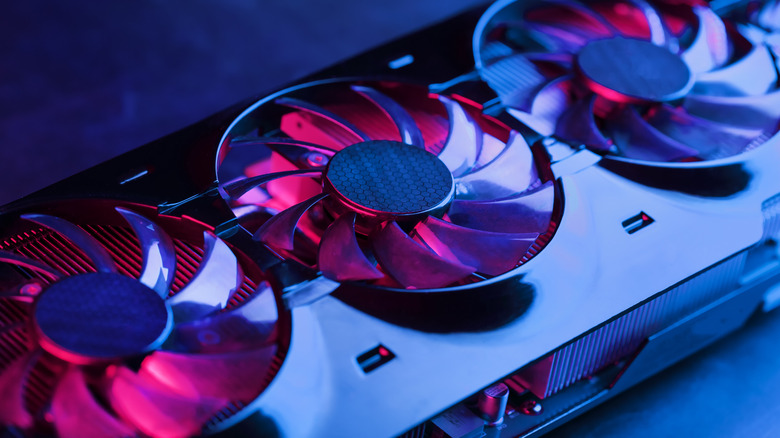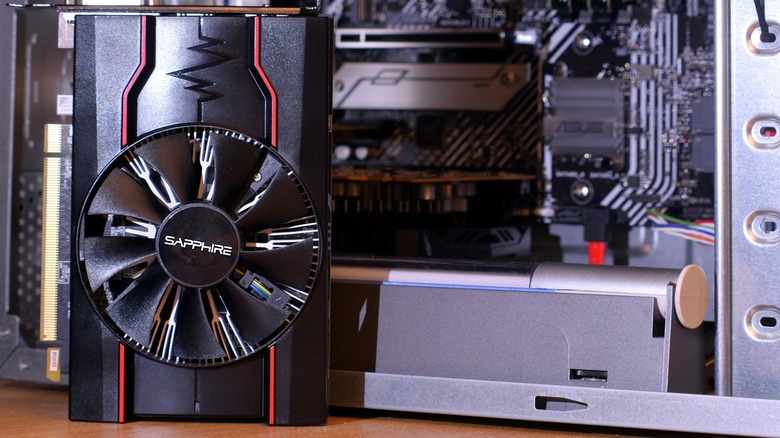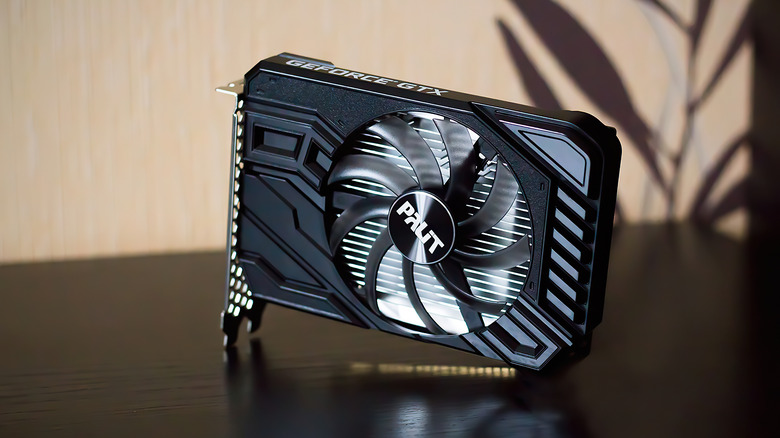5 Cheap Graphics Cards You Should Avoid Buying
We may receive a commission on purchases made from links.
If you're building a budget PC, you might be tempted to go for the cheapest graphics card possible. That's perfectly okay, but keep in mind that buying certain graphics cards (GPUs), no matter how cheap, is almost like throwing away money. Cheap doesn't always mean bad, but if you're shopping on a budget, you need to make smart choices when picking the GPU.
The discrete graphics card market is split between Nvidia and AMD, with a dash of Intel thrown into the mix. All three manufacturers have some cheap GPU models, especially those from previous generations. In the case of Intel, only one generation of cards is currently available, but those GPUs are cheap to begin with.
For AMD and Nvidia, you'll most likely need to reach into the previous generations to buy a really cheap graphics card. There's nothing wrong with that, in general — last-gen GPUs are still great for modern gaming and all other kinds of use cases. Even cards from before Nvidia's RTX era are still viable, but some graphics cards have really poor performance per dollar. Below, we'll list some that you should avoid, along with recommendations that are a better choice.
Here are some of the graphics cards we do not recommend buying.
Nvidia GeForce GT 1030
Our list of poor GPU picks begins with the Nvidia GeForce GT 1030. An aged card by today's standards, it was released in 2017, arriving after other graphics cards in that generation, such as the GTX 1060. It was a budget card then, and it's even cheaper now, priced at around $90 on Amazon. However, according to the Tom's Hardware GPU Benchmarks Hierarchy, it's actually the worst-performing GPU of them all.
This graphics card is very much entry-level. It comes with a mere 384 cores (these days, GPUs sport core counts in the thousands), a mere 2 GB of memory, and a clock speed that maxes out at 1468 MHz. It can run some games, but it's often outperformed by modern-day integrated graphics solutions from Intel and AMD.
Tom's Hardware rates this card really poorly. The publication uses Nvidia's best graphics card, the RTX 4090, as the card to benchmark against — that one receives a 100% score. By comparison, the GT 1030 does a pitiful job, achieving a mere 7.7% score. If you want an entry-level graphics card under $100, AMD's Radeon RX 580 is a far better option. It costs around $90 to $100 and should do a better job with most games.
Radeon RX 550 4GB
While we just recommended the RX 580 right above, we're also here to dissuade you from buying an AMD Radeon RX 550 4 GB. Rated at just 10.3% on the aforementioned Benchmarks Hierarchy, it's a fairly unimpressive GPU, and its price makes it entirely not worth it these days.
At least on paper, this GPU is slightly better than the Nvidia GeForce GT 1030. It has a lower clock speed (1183 MHz) but compensates with double the memory (4GB) and higher bandwidth. It also has more cores, but AMD and Nvidia cores are entirely different, so comparing them is not an easy task.
The RX 550 can run some entry-level games as well as older titles and indies. In theory, this GPU could be fine in a budget build, but the problem is its performance per dollar. Older cards, such as this one, don't always drop in price low enough for them to be worth it. This one certainly didn't get more affordable with time — it still costs around $90 on Amazon. Since you could get the vastly superior RX 580 for around the same price, you should steer clear and let it remain in the GPU graveyard where it belongs.
Nvidia GeForce GTX 1050
We're now back to Nvidia with the GTX 1050. This card was not so firmly an entry-level GPU as the GT 1030 was — it could even be referred to as a midrange model at the time of its release. It was also a semi-popular choice with pre-built PC manufacturers, so many of these cards are probably still kickin' in some aging budget desktops.
With all that said, you still wouldn't want to get the GTX 1050 for any computer you're building today. Its specs are unimpressive: 640 cores, only 2GB of GDDR5 memory, and a boost clock of 1455 MHz. More importantly, it costs around $200, which means it's completely overpriced for its current performance.
While the GTX 1050 is better than Nvidia's unfortunate GT 1030, it's still not the kind of GPU you want to put into your PC. The only way a GPU like this can be worth the money is if you buy a used model at a very cheap price. If you want a decent GPU in the $200 range, the AMD Radeon RX 6600 costs $210 to $220 and will offer infinitely better performance than the GTX 1050.
AMD Radeon RX 6400
Moving up a couple of generations brings us to the last-gen AMD Radeon RX 6400. You'd expect a GPU released in early 2022 would be a great pick, but the truth is that there are better options in a similar price range.
The RX 6400 scores a mere 15.9% in the Benchmarks Hierarchy, which is not too impressive for a card that's not even that old. This is an entry-to-midrange model and it comes equipped with 4 GB of GDDR6 memory, 768 shading units, and a maximum clock of 2.3 GHz. The clock speeds are on point, especially for a cheap GPU, but the extremely narrow 64-bit memory bus and limited VRAM make the RX 6400 an unfortunate pick.
This GPU also suffers from the same issue as all of the others on our list — there are better options with similar prices that are much more worth your time. This model costs around $150, but if you're willing to spend an extra $50, you can get the (vastly improved) RX 6600. With that said, this GPU will still do fine in a budget build if you're tight on money, but it's definitely no gaming beast.
Nvidia GeForce GTX 1650
This GPU might seem like a controversial pick, but it's really just not cheap enough to still be worth buying at this point in time. It still functions well in many gaming PCs, but it's slowly giving way to Nvidia's newer RTX technology and all the benefits that provides.
The Nvidia GeForce GTX 1650 sports 896 shading units, 4 GB of GDDR5 memory across a 128-bit bus, and a clock speed that maxes out at 1665 MHz. It's not much by today's standards, but it will run games just fine, even including newer titles if you're willing to play on low settings. It's not a terrible card, but it's drastically outperformed by similarly priced GPUs.
Nvidia's own RTX 3050, while not perfect, makes for a better option. You can find it for as low as $220, whereas the GTX 1650 can cost anywhere from $160 to $240. The RX 6600 is a decent alternative here too, but it's not much more powerful than the GTX 1650.





